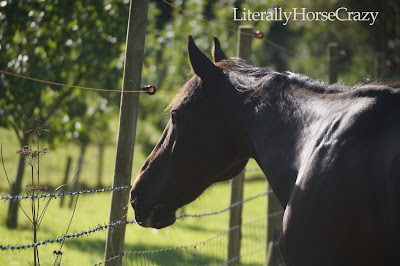A traditional riding education
Most of my equestrian upbringing was done in a very traditional and even academic way. Aged ten, I started to take weekly lessons at a riding school near Versailles. The setting was beautiful. Great architecture, well-maintained buildings. Manicured fields – where horses hardly set a foot – bordered by pristine white fences. A forest nearby. A good variety of horses, from well-behaved kid’s ponies to national-level competition horses, with everything in between. Numerous trainers and instructors, some of whom were very good, some of whom less so. It was very much centred on competitions and on getting young riders to pass the “Galops” a series of exams meant to determine your level of riding, the “Galop 7” being needed to enter national competitions, as well as being a doorway into the world of professional horse-riding and horse-care.
I started riding there when I was ten. I was taught the basics. Walk, trot, canter, jump. Sitting trot, rising trot. I fell off, again and again. I almost gave up. I was pushed, I was shouted at. I learnt to have good balance. I learnt a lot of things – which did not include being compassionate towards the pony I was riding, or being aware that a pony acting up was most likely in pain.
Aged fourteen, and the proud possessor of my “Galop 5”, I upgraded from the ponies to the horses. I fell off again. I learnt to ride side-saddle. I perfected my seat. I learnt to ride with spurs and with a double bridle. I learnt to have soft hands. I learnt about collection. I discovered the sensation of riding – in a double bridled – a collected horse. I jumped, I perfected my riding. I was obsessed with having the horse I was riding “on the bit.” I wanted to reach an ideal of academic riding, whatever that is – I guess I saw it as doing complicated dressage moves in a double bridle with a light and responsive horse.
When I look back at my riding education, I cringe at some aspects of it. At the lack of understanding I showed towards some horses. At the tools I used. At the way I pushed myself, and the horses I was riding. But I am also thankful for it. Yes, thankful. I am thankful for the technical instruction that was given to me, for the way I was encouraged to develop a good seat and light hands. I am thankful that I know how to use a curb bit and spurs correctly. The riding education I was given stemmed from the Equitation in the French tradition[1] which has been inscribed on the Unesco’s list of the Intangible Cultural Heritage of Humanity. It dates back from the Renaissance and was developed, and put in writing, by different generations of riding masters, such as Antoine de Pluvinel or François Baucher.
As a historian specialising in equestrian cultures, I am grateful for the riding education I received. It means I know what I’m talking about when discussing curb-bits and their effects on the horse, or analysing the position of the riders. It means that I have a better understanding of the way horses were ridden in the past. Because the traditional equitation I was taught is very much anchored in the past – outdated even.
As a horsewoman, in spite of my regrets, I am glad to have been taught in that way. It had some benefits. And I believe it helps me have a more balanced view of the horse world. For instance, I do not like bits, but I also understand that, according to the way in which they are used, they can render the communication between horse and rider more efficient, and that so much depends on the rider’s hands. The same goes with spurs. I feel that it is easier, and maybe more honest, to reject what you have experienced: I have been taught to ride in a certain manner, and now I make the informed choice of riding in another manner.
Traditional equitation is like an art, that sometimes – often? – forgets that horses are sentient beings who suffer in silence. It is weighed down with misconceptions about the way horses think or see the world, misconceptions I often find hard difficult to rid myself of. But it is technical. It is precise. It is part of our equestrian heritage and, even if some aspects of it are disputable, we have to accept that, and that there are good things to take from it and lessons to learn. Even when making the choice to go bitless, or tackless, many of the principles we apply, or the result we strive to attain – for instance a collected horse, carrying himself lightly, responsive to his/her rider’s aids – stem from the ideals of this academic equitation.




Comments
Post a Comment